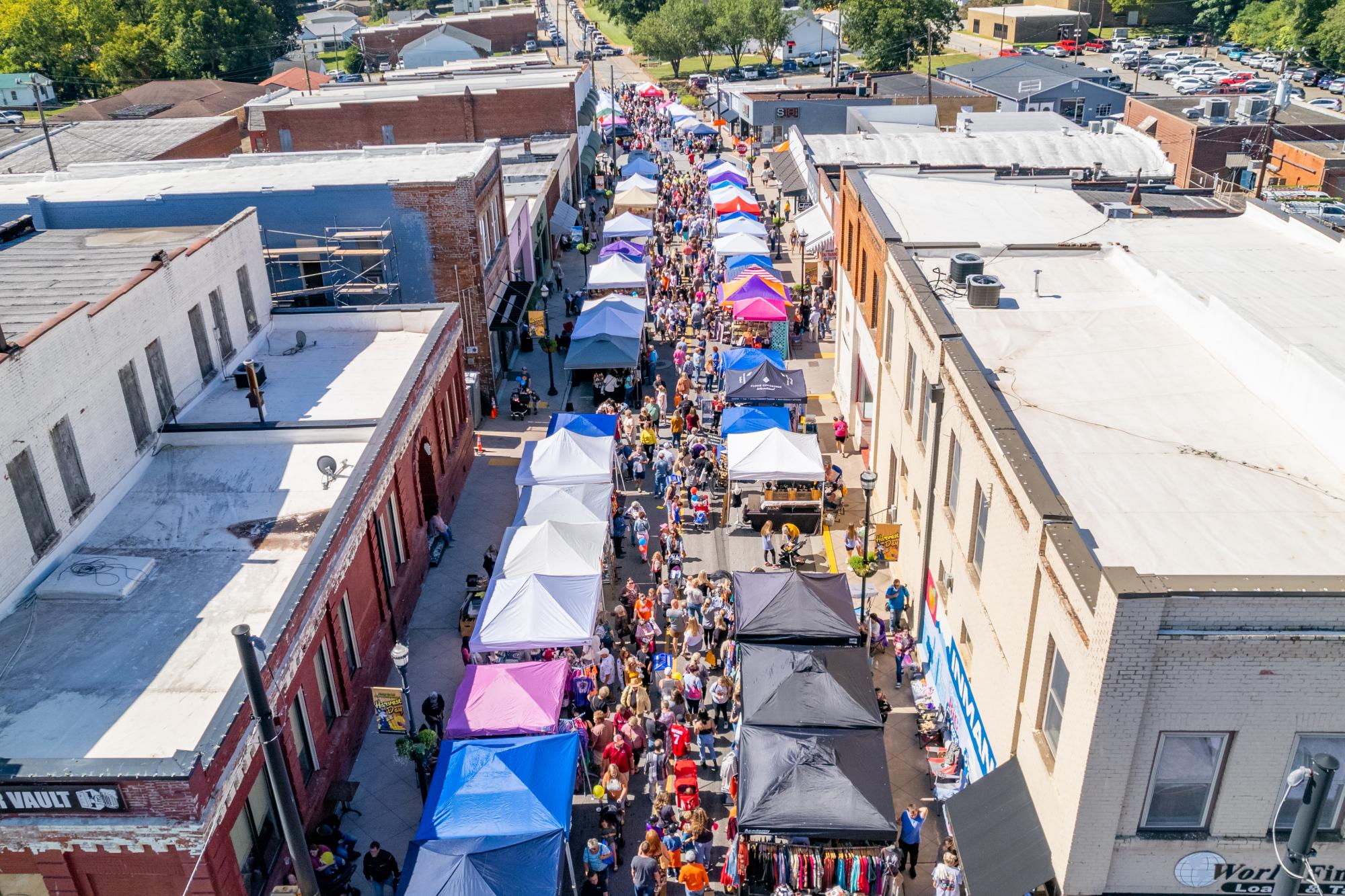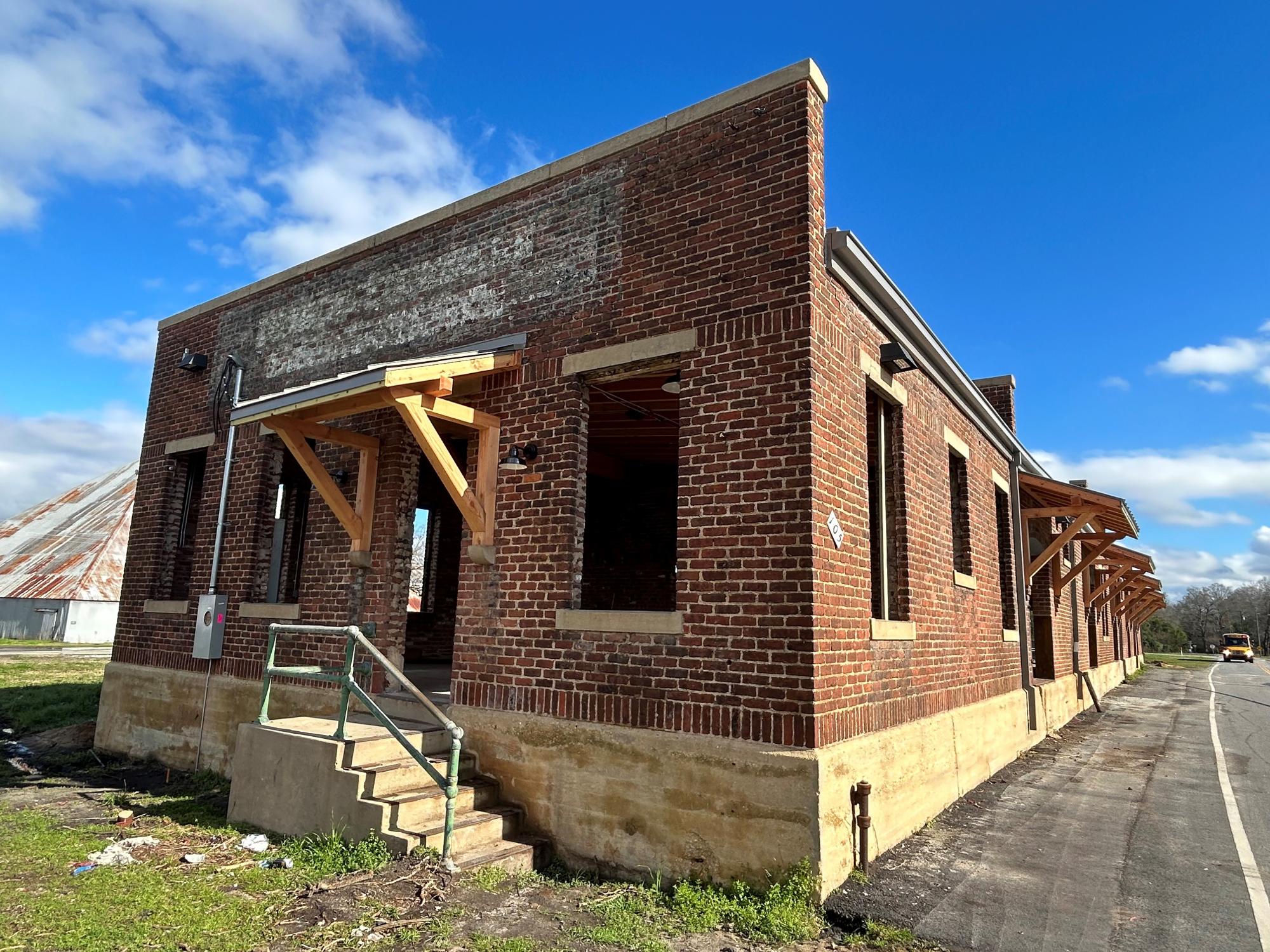For Inman City Administrator Joe Lanahan, the overall economic story of the Inman community has been broadly defined by the arrival — and departure — of some major economic drivers. The exciting thing for Inman presently is that work is underway to bring in a new one: the Saluda Grade Trail, to be built on a former railroad pathway. The trail would connect Inman with Zirconia, N.C., near Flat Rock and Hendersonville.
It’s an effort, he said, which could bring transformative economic benefits not unlike what the now-famous Swamp Rabbit Trail has done for the City of Travelers Rest.
“I think when you look back on the history of Inman, like a lot of our communities, something sparked it,” he said. “For us, obviously, it was the train line. You either lived in Inman ‘before the train’ or ‘after the train.’ You either lived in Inman ‘before the peaches’ or ‘after the peaches.’ You either lived in Inman ‘before the mill,’ or ‘after the mill’ — and we still have an active textile mill, which we are very proud of. Inman Mills is the oldest business in Inman, almost 150 years old. I think the fourth one will be that you either lived in Inman ‘before the trail’ or ‘after the trail.’”

The Inman Harvest Day Festival traditionally takes place in September, but was rescheduled in
2024 because of the impacts of Hurricane Helene. Photo: City of Inman.
Lanahan was one of several representatives of small municipalities to present during the Municipal Association of SC Small Cities Summit in August, describing how their economic development efforts have gained traction. All three of the communities presenting, including Bishopville and Kingstree, participate in one of the levels of Main Street South Carolina, which offers technical assistance to guide local revitalization programs.
Like the rest of Spartanburg County, Inman is growing substantially and attracting millions of dollars in private investments. Beyond new housing construction, the impacts are becoming apparent in the business core as well, which has a Harvest Day Festival and now a purpose-built pavilion space with power and restrooms to host the Music on Mill series. Recently vacant downtown storefronts had opened new businesses, Lanahan said, and a brewery moved to town as well. City council’s vision, confirmed by a charette process, involved starting with downtown revitalization and working outwards.
“The idea is, how do you start getting folks back into that downtown, take them off the bypass, and bring them off [Interstate] 26? That really starts for us with two things — retail and restaurants,” he said.
The City of Bishopville in Lee County has been pursuing projects including its downtown master plan. Perhaps the most visually impressive is a $1.4 million effort to refurbish its historic brick railroad depot building and its surroundings, located in the center of the downtown, to create a community and event space.
Bishopville Councilmember Wayne Hancock described the decision-making processes that council uses to determine its development priorities each time a councilmember is elected.

The City of Bishopville leveraged state funding to refurbish its railroad depot to serve as an event space.
“We have each councilmember and the mayor prioritize a list [of action items], bring it in, and we have a workshop,” he said. Those lists are prioritized as a group, and then delegated to each committee chair to try to take action on their task. One of the priority lists we made in 2019 was to clean up dilapidated structures, stabilize the downtown historic district, develop partnerships with Lee County, the legislative delegation, Santee-Lynches Regional Council of Governments, apply for all funding sources for grants and make infrastructure improvements.”
Hancock said Bishopville “applies for pretty much every grant we could apply for,” while finding necessary funding matches.
The railroad depot project, he said, received $450,000 from the SC Department of Commerce and $450,000 through the SC Department of Archives and History.
In Williamsburg County, the Town of Kingstree has generated new energy in recent years, in part from the announcement of a new state park along the Black River, a growing tourism destination, and in part because of its investment in its historic downtown.
“We started with the little things,” Mayor Darren Tisdale said.
In some cases, that meant community cleanup efforts along the river and in the downtown. It also involved city branding that invokes Kingstree’s history and its namesakes — the tall pines suitable for ship masts, marked to indicate that they were the property of the British Crown.
It also involved the downtown benches, with funding donated by community members, and hanging flower baskets, which Tisdale said proved more of an attraction than he expected. The ultimate goal in all of it, he said, is to create an environment where younger generations will want to return and open businesses.
“You ask me what my mission is?” he said. “Let’s rebuild Kingstree for our children’s children. It’s nothing about Mayor Tisdale.”
Main Street South Carolina is a technical assistance program of the Municipal Association of SC. It offers several community membership levels ranging in cost and requirements. Learn more online.
